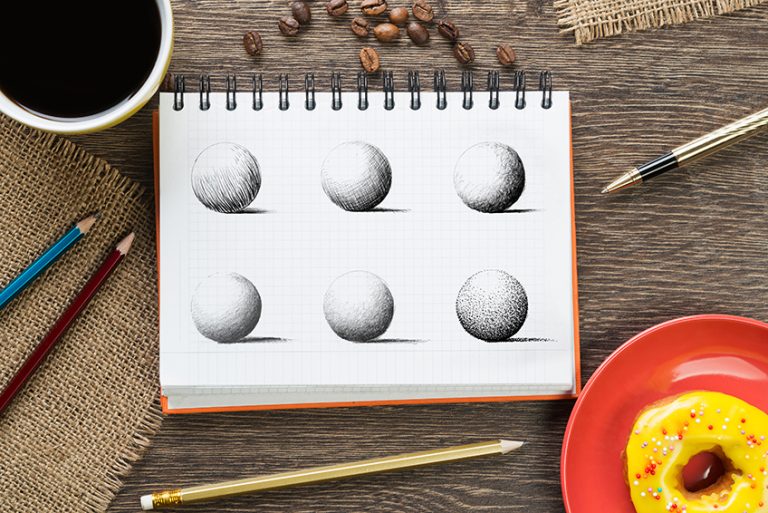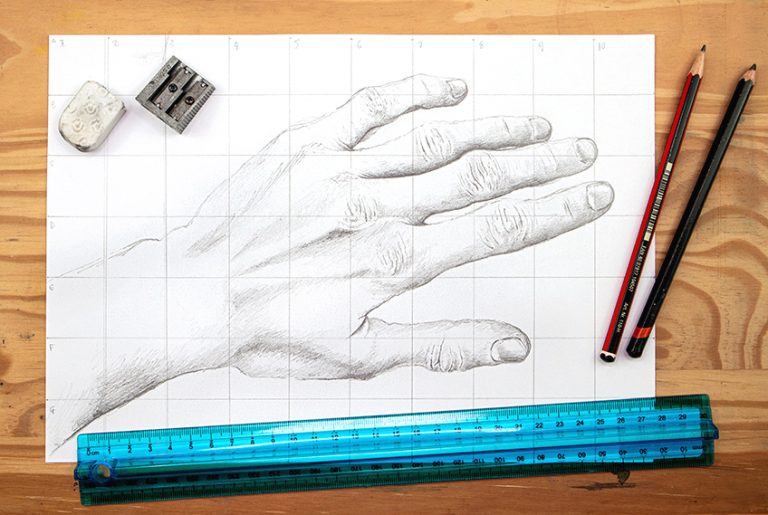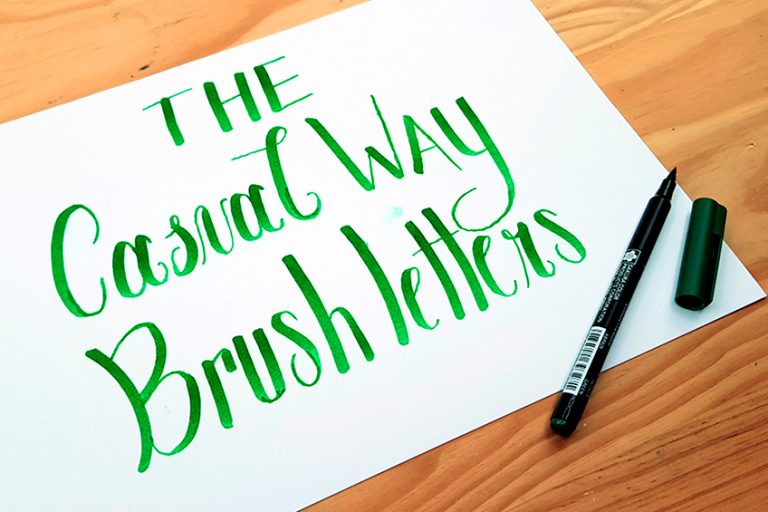Drawing Exercises – Learn How to Draw in Only 9 Days
Drawing is a skill that requires both practice and consistency, however, it can seem that our days fill up quite easily and the beautiful recreational activity of drawing can be lost in a busy day-to-day life. This article helps you to rediscover your interest in drawing by giving you a guide on how to make practice simple drawing exercises on a daily basis. In many ways, we can find the idea of drawing to be an elaborate process of setting up and then getting into the mindset to then only have an effective creative result. This is far from true, however, and in many ways, drawing exercises can be something that fills your empty time in the small day-to-day moments. Over time, this will refine your drawing skills in subtle and seamless ways.
Table of Contents
An Easy Guide to Improve Drawing Skills
This tutorial provides a chronological progression of drawing exercises that help you to build your skills in only 9 days from basic drawing exercises to complex drawing exercises. Drawing does not have to be a three-hour time period that is set aside in the day – it can be a series of small little bites of time spread throughout the empty spaces within a day.
Creating a daily practice of more digestible drawing exercises also gives you more confidence and achievable tasks that can be done. You will also find that these simple drawing exercises are a great way to work out drawing skills and are intended to be done in a sketchbook. We will also find that the drawing process is very simple and requires minimal tools, which makes the process much more doable.
Different Daily Drawing Exercises
The intention of this guide is to help you establish fundamental skills that you can use on a daily basis to build your basic understanding of shading and linework. Understanding the basic concepts of the drawing will also help to maximize your time actually drawing. All these drawing exercises are intended to be done chronologically, each skill learned will be built off the previous one. This makes the progression into the more complicated subject matter much more doable and less intimidating.

Learning to Draw Basic Shapes
We want to start with the basic drawing exercise of exploring fundamental shapes and shading. Learning how to shade different shapes with different mediums is a great way to advance your shading skills as well as your understanding of light and shadow. In many ways, different mediums and shading styles can also be used strategically later on for textural differences in real-life object drawings.
To make drawing less daunting, the best thing to do is to start small and slowly build up to more complex drawing exercises. We do this by starting with simplistic three-dimensional shapes, where we can focus more on the effects of shading and how to form objects with different shading styles.

Working with basic three-dimensional structures enables you to work out shadow and light formations within a drawing. It’s essential to know how to create shadows around objects in spaces that are opposite to the light source. This will teach you to be more aware of light sources when drawing from life.

Once you understand the process of shading simple objects where you create seamless transitions within your shading, you then can apply these concepts to more complicated structures.

Working on basic shapes also gives you the opportunity to refine your shading skills by exploring different shading methods.

It is also a fun way to explore the different effects that different shading styles can create, such as the scribble technique. This technique is a unique way to shade an object and looks amazing when done right.

Another simple shape that is fundamental is the sphere. The sphere is a classic shape that has no corners and, in many ways, is the base shape of various other objects without corners.
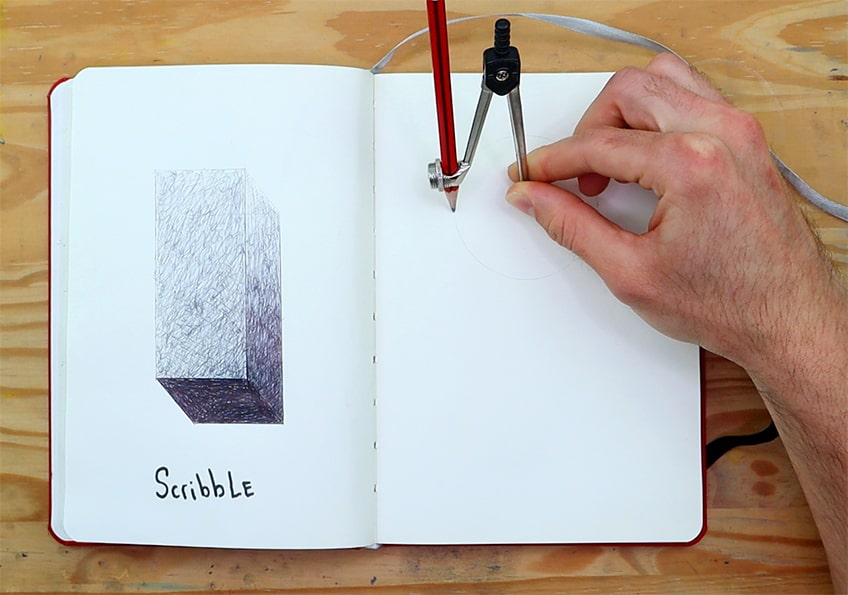
Learning how to shade a sphere is a great skill because it teaches you to create seamless transitions.
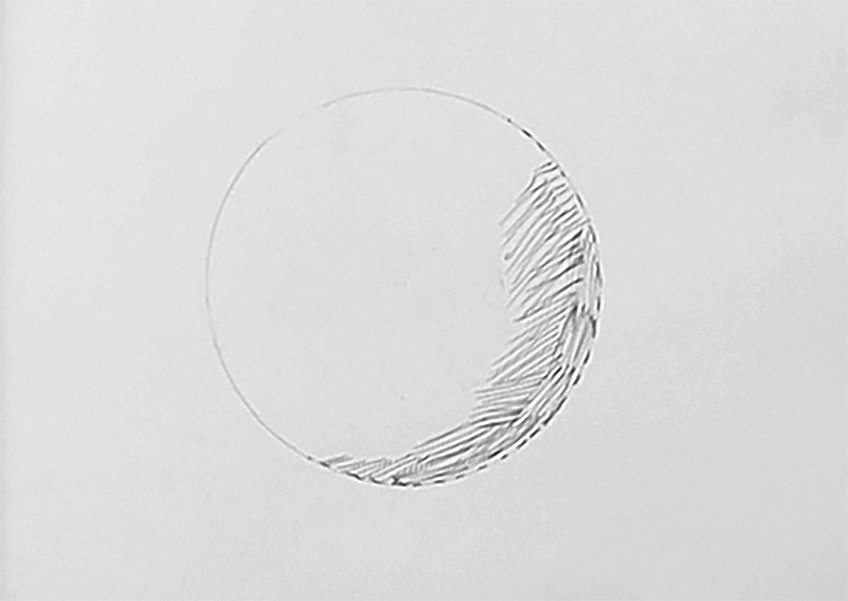
With cornered objects, we can often create different tonal values on different sides of the shape, whereas, with a sphere, we are trying to create a seamless transition in the shadows along the curved surface.
Using Different Shading Techniques
Again, learning how to shade in simple objects is a foundational skill that can be applied to more complex objects. This means that we want to use this drawing exercise to explore different mediums for shading.

As we get more comfortable with different shading tools, we will have a more confident approach to the more complicated subject matter.
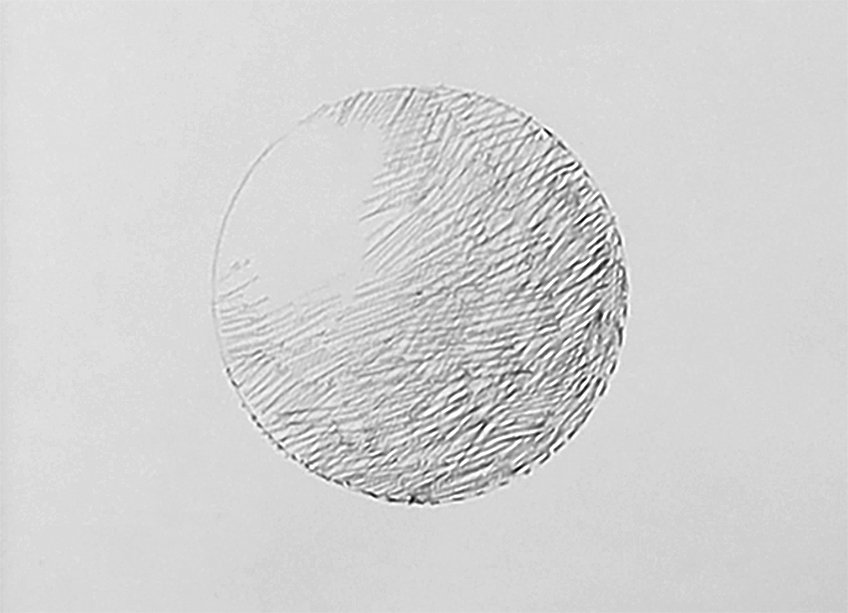
Try to explore how different shading styles can be utilized within different shapes. For instance, the cross-hatching method is quite tricky to implement into a sphere. A sphere is a great way to grasp how light wraps around an object and how shadows form subtly on the other side.
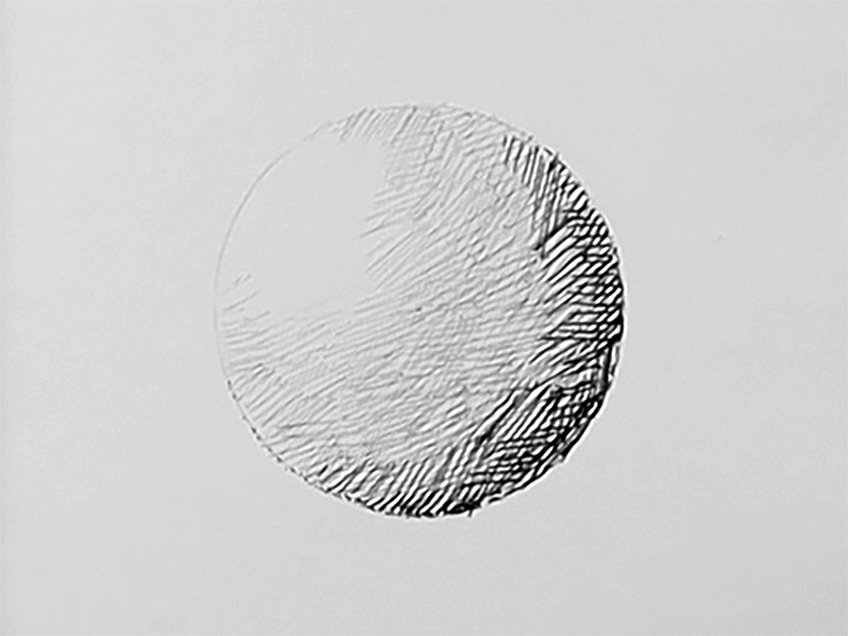
This makes the cross-hatching method a great skill to acquire, especially for moments in a drawing with subtly curved surfaces similar to that of the sphere.

It’s good to try harder forms of shading with simple shapes because the more practiced we are the more natural it will seem when applying them to stranger subject matter. This is also teaching us the concept of shadow and light, which is essential to drawing.

So, remember to experiment with different shapes and shading styles, considering how different shading styles create different effects within different shapes. Also, keep in mind that shadows and light formations are represented through the use of shading.
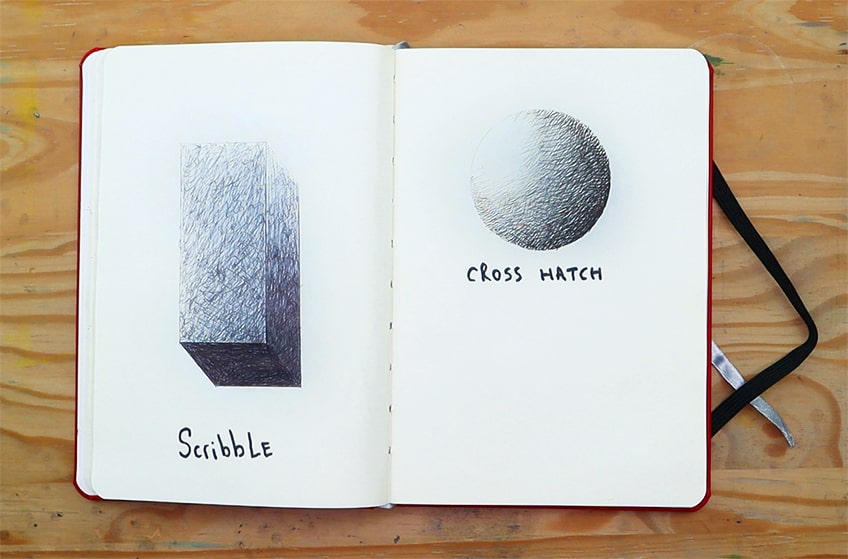
You can also explore the effects of using shading in strange ways with simple three-dimensional shapes.

For instance, you can draw three-dimensional shapes in their transparent form, allowing all lines to be visible. From there, you can shade each visible segment in various directions.

Again, explore different shading styles whilst trying different shading effects within your three-dimensional structures. Exploring this method of shading different segments in a single shape also provides you with a sense of the abstract aesthetics you can achieve through the application of shading.
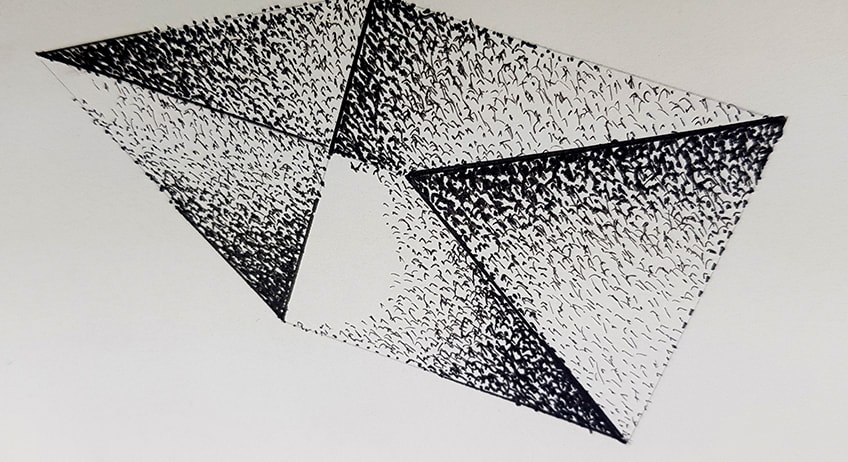
Spend time on shading in different three-dimensional structures until you feel that you have built a base of both forming shapes and shading them in with different mediums. Try to have this skill on lock and then proceed to something a little more complicated.
Drawing Individual Household Items
Once we become habitual with practicing shading simple three-dimensional shapes, we can then start to apply these concepts to real-life objects. We will also find that the knowledge of different mediums and shading styles can be used strategically for textural differences in objects.
The best way to move on from drawing simple 3D objects is to start drawing single household real-life objects. This could be something like a vase, cup, mug, basket of apples, or anything that is quite basic in structure.

You will start to learn that these objects have the same quality of light and shadow formations as basic three-dimensional shapes. However, this time, you will become more aware of the textural differences.
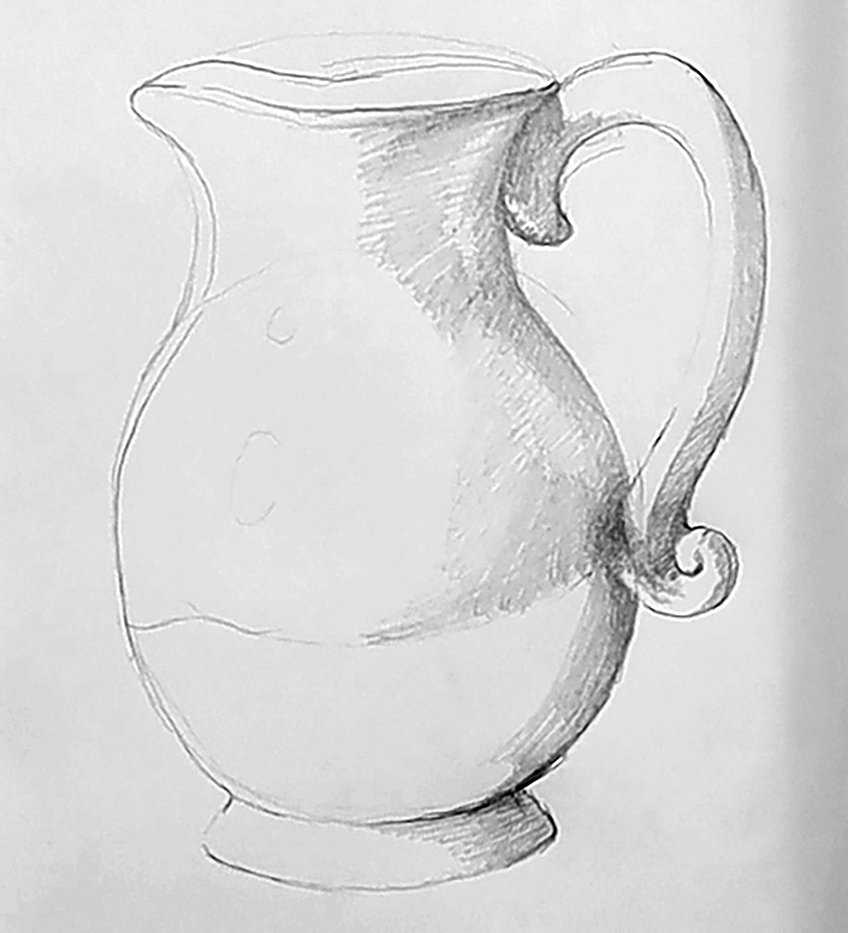
Being more responsive to textures in objects starts to make you more aware of the way objects interact with light in different ways. Light and shadows will always be fundamentally the same in that they will be present on opposite sides of an object.

However, some textures are smooth and glossy and can therefore reflect light more intensely, whereas some objects have matte surfaces and therefore absorb light a little more. This will make us more considerate of how we shade objects to represent these differences.

Drawing single objects in a sketchbook is a great exercise that can be done on a daily basis, as there are various objects from which you can draw inspiration in your immediate environment. This is more of an exercise to explore the textural variety.

You will find that the concepts used to draw simple three-dimensional can be directly transferred to drawing more complex three-dimensional objects. Playing around with different surfaces, such as a vase, for example, will also give you insight into the refractions and distortions of light and shadow on the surface of an object.

This is particularly true for smooth surfaces, which makes for a great drawing exercise. In many ways, we will find that the refractions are so strange that they are almost easy to draw because of how distinct the lines can be in some cases.
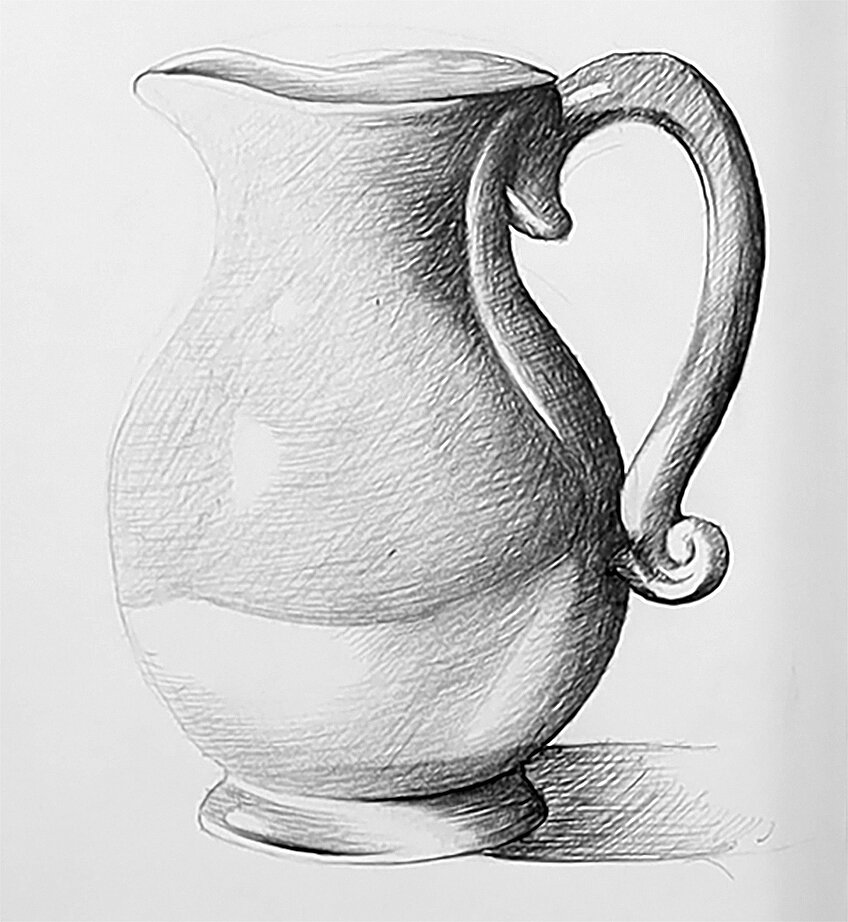
Once we start comparing such surfaces with more absorbent and matte surfaces, such as fruits, we will start to notice finer details. Simple still-life drawings such as these are really good for observational skills.
When shading different objects, the process will also be the same every time, where we sketch the fundamental shape and slowly start to refine it into a more identifiable structure.

We can then start to take note of the differences in shadows and light and how they form around the object. From there, we can start making decisions about the mediums and shading styles that will complement the subject matter. From there, it is simply a matter of keen observation, taking note of all the subtle details. This also prepares you for other drawings where you try to capture objects in motion, such as people.

Still-life drawing allows you the opportunity to really advance your observational skills, as it is a practice where you can take your time and really look for long periods of time.

In many ways, these exercises will improve drawing skills, but they will also improve your attention to detail in general. This is quite a fundamental skill for spacial and object awareness you will need for other activities in your daily life.

Try to work out drawing different objects with different mediums, considering the aesthetic qualities of different tools and how they create different surfaces and textures. This is perhaps one of the most essential daily drawing exercises that should be done for a while before moving on to drawing in public spaces which is where you would try to capture moments in time.

You can also explore timed exercises to challenge yourself with drawing objects as quickly as you can. This is a good progressive task for transitioning into drawing more difficult subject matter.
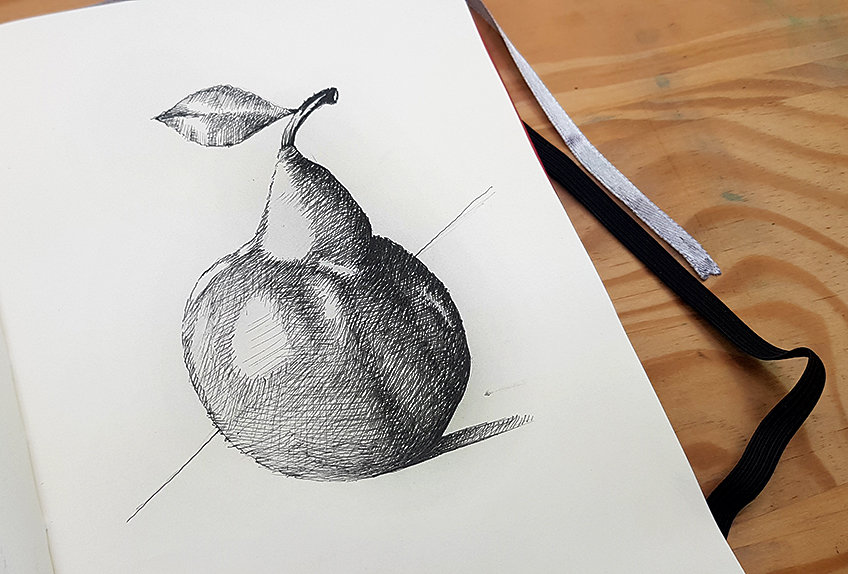
Once you have established a daily practice of still-life daily sketches in your sketchbook, you will have created a good and comfortable mentality for capturing realistic objects in real-time, as you are present with the subject matter in the vicinity.
Daily Sketches of People
Once you have become comfortable with drawing three-dimensional shapes and basic objects, you can start to move on to drawing more complex subject matter like people. This exercise, however, is intended to be done quickly, as there are often moments when people are moving from one destination to the next.
In many instances, we will find that there are people who are sitting around waiting or eating, and this is a good opportunity to capture a figure in a still-life approach. However, there will always be subtle movements in a person’s body language. A daily sketch of people is one of the most important drawing exercises for improving your observational skills because of the variety of details present.
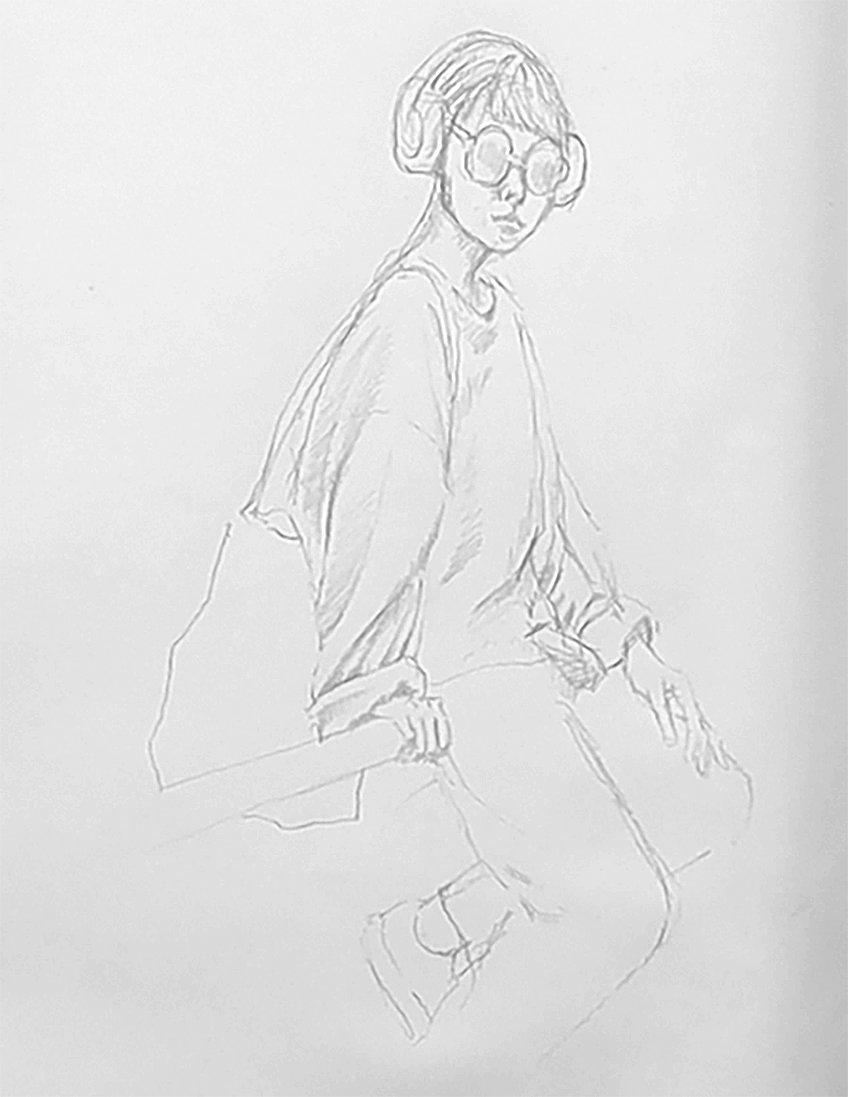
When doing daily sketches of people, we will be working with various variables in a single drawing, such as clothes, body proportions, light, shadows, and many others.
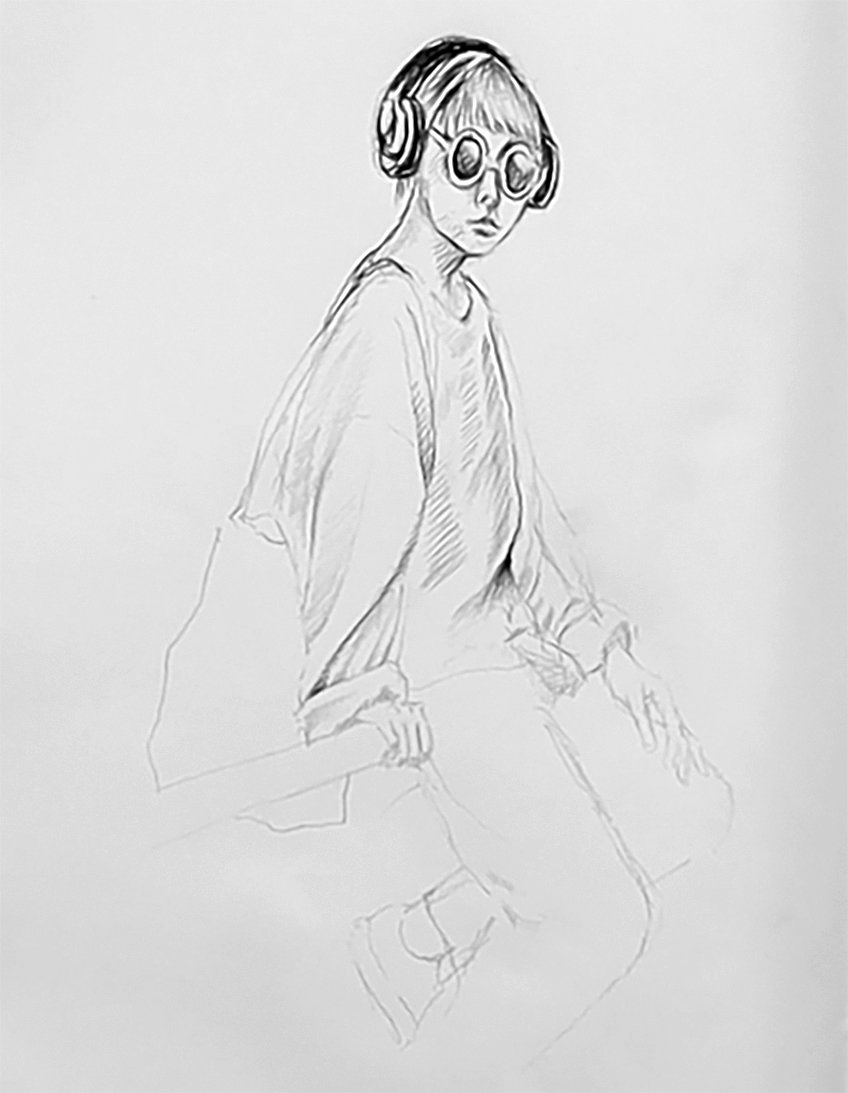
This observational drawing exercise increases your awareness and attention to detail significantly. This is also an exercise that doesn’t necessarily have to be detailed when you start out.

You can begin by creating some basic vague figure sketches that demonstrate shape and form to work on drawing the simple body proportions, movements, and poses that you see.

We can also start to play around with how we bring characters to the foreground by experimenting with background features. This is also a great exercise you can transition to from still-life drawing because, in many ways, you’re drawing people as you would an object.

Keep in mind that people are often in different types of attire means that there is a textural quality in their clothing that you are trying to capture in your drawing. This is often dedicated to their interactions with light and how shadows form on their clothing. When we draw people in motion, we are forced to try our best and notice as much as we can. This makes drawing people a memory exercise, which is amazing for your retention of information for drawing.
It’s also important to explore people in different poses and spaces as well as people who are mobile or stationary. Drawing people in these two different states offers two different drawing approaches. The more we practice drawing people in motion, the more we will be working on our memory-related drawing skills. We will find that if we make this a daily practice, we will gain the ability to sketch faster and in detail.
Exploring Different Mediums
We can also use this as an opportunity to try out different mediums. Building up from your basic three-dimensional shapes drawing exercise to still-lifes and then eventually people is a great progression with skills that can be used interchangeably in each exercise. Allow yourself to explore different drawing mediums for different aesthetic effects in your drawings. For drawing people in motion specifically, a useful detail to take note of is light and how it forms on the figure.
This means that we should take a mental snapshot of where the shadows are most significant and where the light is most significant. From there, we can be the figure more loosely with the knowledge of better shadow placement. This drawing practice should be approached as a daily sketch, which can take time and can be difficult at first. This can take a while but that is the nature of drawing. This is an essential skill to work on when learning how to practice drawing more effectively.
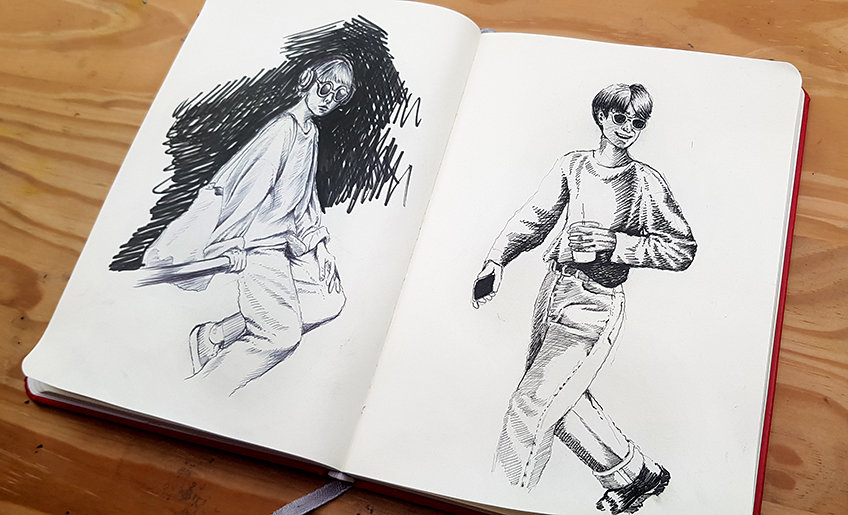
Daily Sketches of Spaces
The last exercise is a great way to utilize all the skills learned in the previous drawing exercises. This is because it requires attention to detail, the assemblage of various elements such as light, shadow, and a sense of depth. Drawing spaces is another great observational drawing skill, as it also develops both your sense of spatial awareness and sense of depth.
Sketch 1
- Draw Overlapping Structures: Explore spaces with an array of overlapping structures due to depth of field, offering a great challenge in observing depth and viewing angles.
- Enhance Depth-of-Field Skills: Practice sketching spaces regularly to improve your ability to capture distance in drawings.
- Sketch Spaces Quickly: Try quick sketches in transient areas like public transport, where time is limited, to enhance your skills.
- Memory Exercise: Treat these quick sketches as memory exercises, similar to drawing people in motion, improving over time with practice.
- Develop Foreshortening Skills: Learn to depict foreshortening and distance, understanding how objects change in scale with distance.
- Assemble Scenes Like a Puzzle: Approach drawing spaces by connecting structures from the background to the foreground, creating a cohesive scene.
- Focus on Man-Made Areas: Pay special attention to man-made spaces with distinct lines and corners, like public transport and buildings, to understand space connectivity.
- Sketch Confidently in Short Time Frames: Learn to quickly identify connecting lines in a space, understanding how the foreground merges with the background for efficient sketching.

Sketch 2
- Draw Static Environments for Meditation: Practice slow drawing in unchanging environments for a meditative experience.
- Explore Different Mediums and Tonal Values: Use these static scenes to experiment with various drawing mediums and explore tonal values for depth and distance.
- Be Suggestive in Early Stages: In initial sketches, focus on creating an atmosphere rather than a realistic depiction, being more suggestive with your marks.
- Creative and Curatorial Approach: Choose static environments creatively, like exploring your neighborhood, and set up spaces that interest you for drawing.
- Utilize Learned Skills and Experiment: Apply the skills you’ve acquired so far and experiment with combining different mediums.
- Recognize Interchangeability of Skills: Understand that skills learned in various exercises are interchangeable and can be applied in different contexts.
- Patience and Consistency in Daily Sketches: Remember the importance of being patient and maintaining consistency in your daily sketching practice.

Tips and Tricks to Remember
- Drawing practice takes time. It is all a matter of patience when it comes to drawing, so try to be patient and allow yourself time to develop.
- Always think about light and shadow. This is a fundamental concept to keep in the back of your head when trying to improve your drawing skills overall.
- Experiment with different mediums. When going through drawing exercises to improve your skills, incorporating different mediums is a great addition to consider in order to enhance your drawing skills.
- Try your best to be consistent. A sketchbook is essential as it can make being consistent much more doable when learning how to practice drawing.
- Make time if you are truly interested. It is important to make sure that you remain dedicated and put aside little bites of time in the day for drawing exercises so as to improve your skills as an artist.

Drawing exercises can be small and doable tasks that will enhance a variety of skills over time, provided you stick with them. The best way to go about keeping yourself consistent is to put a daily reminder on your phone or to make a goal of finishing a sketchbook within a certain period of time. Most importantly, art is fun, so try to have a good time with it, and don’t be afraid to challenge yourself.
Frequently Asked Questions
How Do You Improve Your Observational Drawing Skills?
Drawing is a skill, which means it requires practice and commitment. The only way to develop your drawing skills is to be consistent with drawing. This is particularly true for developing your observational skills, which is why having a sketchbook is perhaps the most useful tool that can be utilized on demand. Having a sketchbook with you allows for the opportunity to sketch whenever and wherever. Using your sketchbook as a means of documenting your environments, activities, and day-to-day scenarios can be an amazing way of refining your observational skills. In many ways, life is constantly moving, which means that as you sketch in real-time, you are somewhat forced to rely on your sight and memory. This will allow you to become more vigilant and will therefore have an effect on your observational skills.
How Do You Improve Your Shading Skills?
Shading is simply the way in which we represent the interaction between objects and light, which in turn creates shadows and defines the three-dimensionality of objects. On one hand, developing an awareness of light and how it interacts with objects will give you a more advanced approach to your shading. This is because you will have a better sense of shadow placement and how these shadows are cast due to the light source present. The next major exercise for improving your shading skills is to practice different types of shading, such as smooth, cross-hatch, line, scribble, and other shading forms. Allow yourself to experiment and find what works for you within your own drawing practice.
Cite this Article
artincontext, , “Drawing Exercises – Learn How to Draw in Only 9 Days.” Art in Context. December 17, 2023. URL: https://artincontext.org/drawing-exercises/
, a. (2023, 17 December). Drawing Exercises – Learn How to Draw in Only 9 Days. Art in Context. https://artincontext.org/drawing-exercises/
, artincontext. “Drawing Exercises – Learn How to Draw in Only 9 Days.” Art in Context, December 17, 2023. https://artincontext.org/drawing-exercises/.


